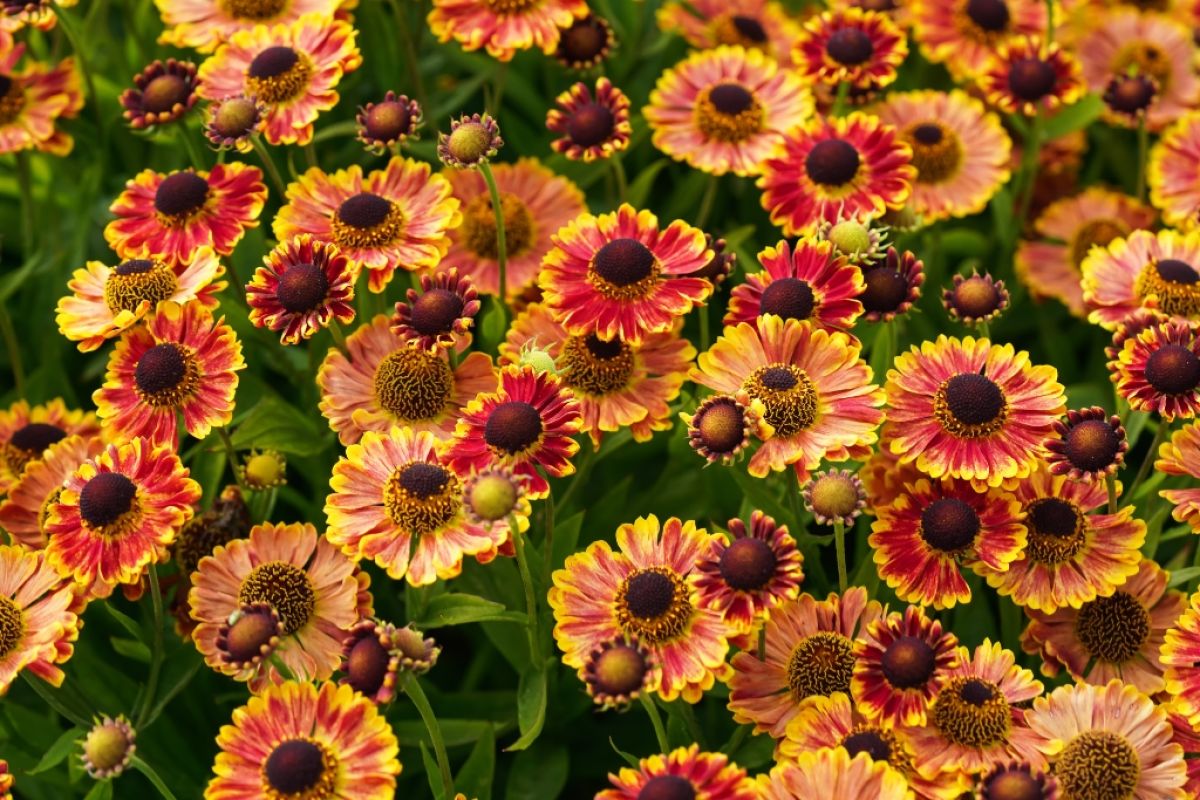Indigenous to a large part of North America, Helenium autumnal compositae can be found in the wild from Canada to Florida and across to Arizona. It is especially apparent in fields in New England where the plants grow in wet thickets up to five feet tall.
There is a central knob in each flower surrounded by wedge-shaped large petals, each edged with three-toothed notches. The petals are usually yellow, but some are a red/brown or a deep brown.
These moisture-loving native perennials like to be divided every few years, and the leaves can be pinched back in early summer to promote a shorter bushier growth habit.
Early Colonial settlers brewed a tea from the flowers to treat worms, flu, and fevers. This plant was taken to England as early as 1729. The name Helenium honors Helen of Troy, who of course had no connection at all with this showy native from the American colonies. Also, the plant does not provoke sneezing either, despite its common name of sneezeweed.
In a cultivated garden, Helenium looks best with other yellow or bronze flowers that bloom in the fall, and they light up a flower bed as the growing season draws to a close.
This is Moya Andrews, and today we focused on Helenium.










